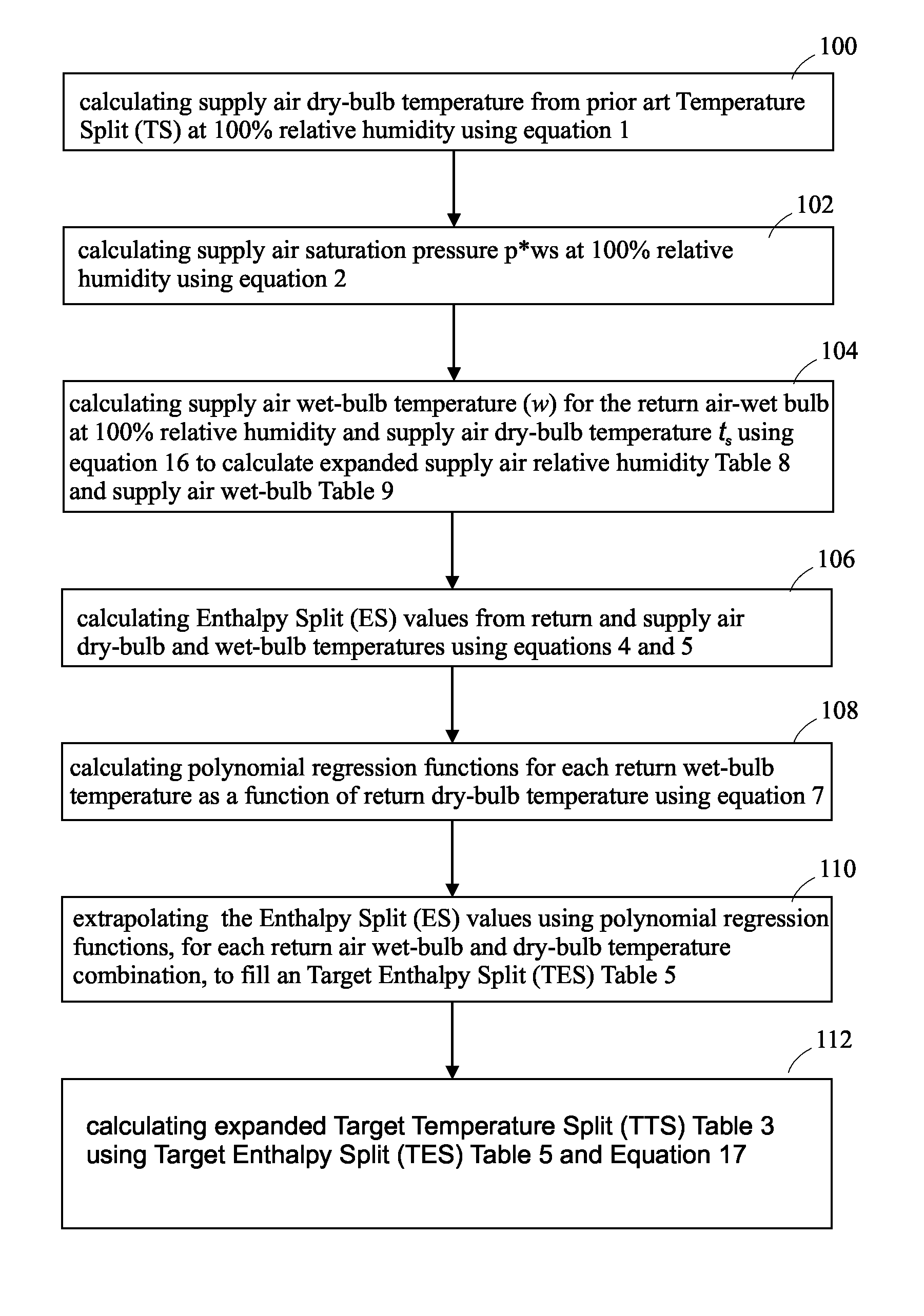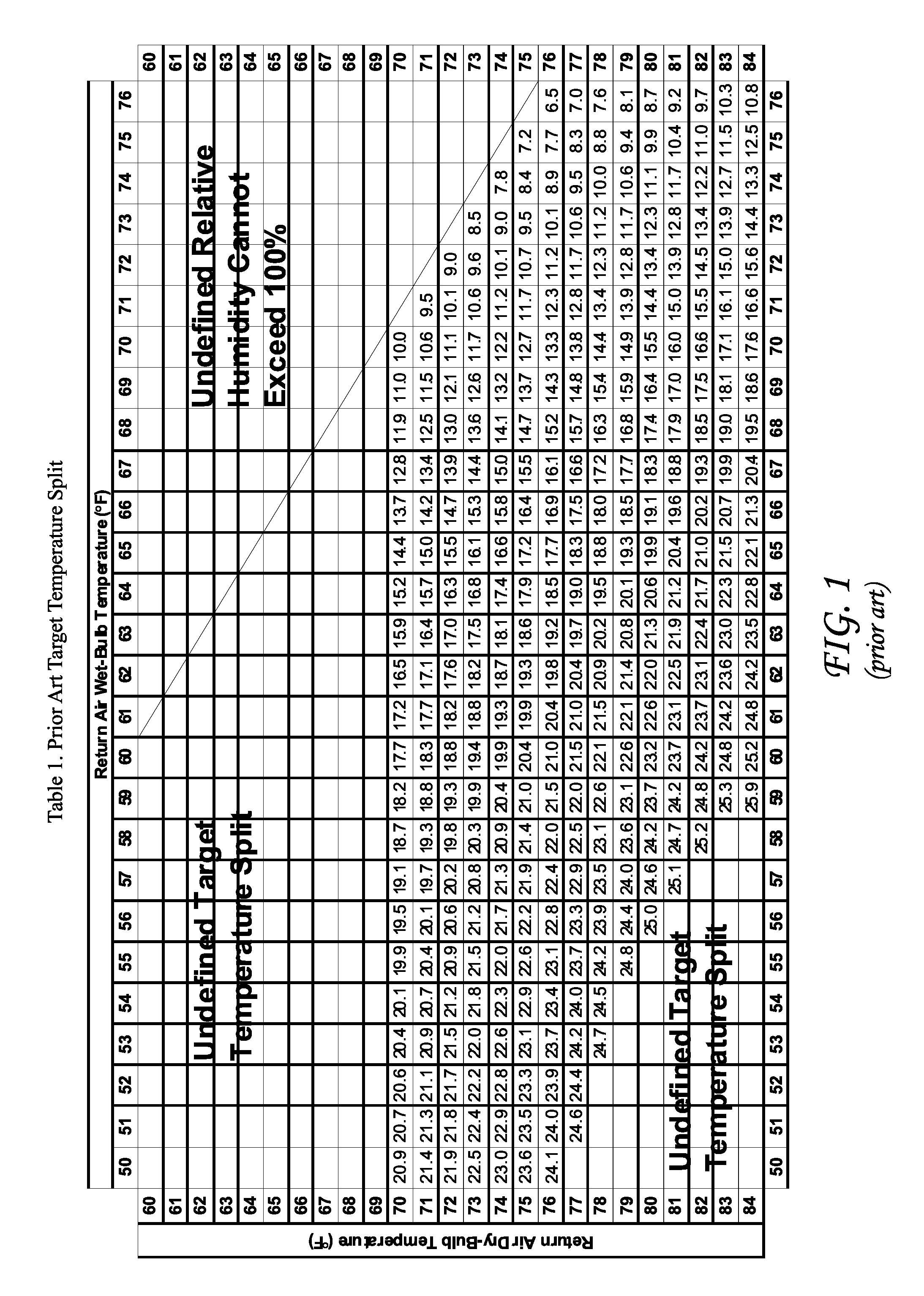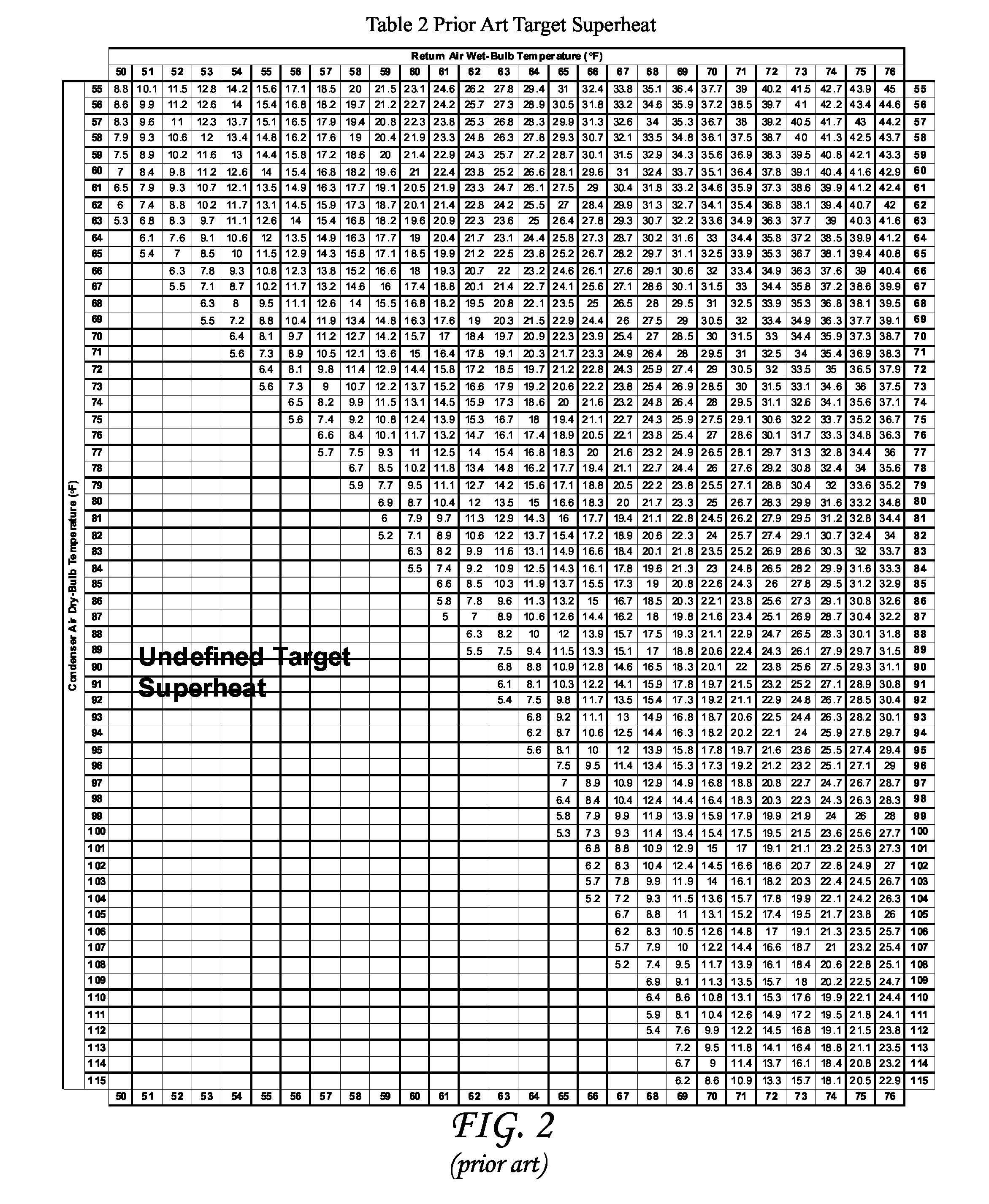Method for calculating target temperature split, target superheat, target enthalpy, and energy efficiency ratio improvements for air conditioners and heat pumps in cooling mode
a technology of target temperature and superheat, applied in the field of air conditioners and heat pump systems, can solve the problems of inefficient operation, air conditioners being overcharged, etc., and achieve the effects of reducing refrigerant pressure, proportionally reducing electric power usage, and saving electricity
- Summary
- Abstract
- Description
- Claims
- Application Information
AI Technical Summary
Benefits of technology
Problems solved by technology
Method used
Image
Examples
Embodiment Construction
[0055]The following description is of the best mode presently contemplated for carrying out the invention. This description is not to be taken in a limiting sense, but is made merely for the purpose of describing one or more preferred embodiments of the invention. The scope of the invention should be determined with reference to the claims.
[0056]A functional diagram showing an exemplary R22 or R410a air conditioning system 10 with provision for refrigerant charge and airflow measurements according to an embodiment of the invention, is shown in FIG. 3. Typically, the compressor 12 compresses the refrigerant into a high-pressure vapor refrigerant flow 14 through a pressure line 15 into a condenser 16. An outdoor fan 17 creates an air flow 19a across the condenser 16 which cools the high-pressure vapor refrigerant flow 14 by removing heat and condenses the high-pressure vapor flow 14 to a liquid refrigerant flow 18. The heat added to the air flow 19a produces a heated air flow 19b. The...
PUM
 Login to View More
Login to View More Abstract
Description
Claims
Application Information
 Login to View More
Login to View More - R&D
- Intellectual Property
- Life Sciences
- Materials
- Tech Scout
- Unparalleled Data Quality
- Higher Quality Content
- 60% Fewer Hallucinations
Browse by: Latest US Patents, China's latest patents, Technical Efficacy Thesaurus, Application Domain, Technology Topic, Popular Technical Reports.
© 2025 PatSnap. All rights reserved.Legal|Privacy policy|Modern Slavery Act Transparency Statement|Sitemap|About US| Contact US: help@patsnap.com



